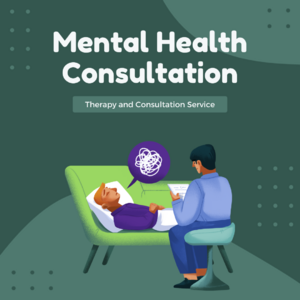Assessment of Chronic Cervical Pain
Introduction[edit | edit source]
Chronic cervical pain is a complex condition demanding a nuanced approach from physiotherapists. This article delves into the intricacies of assessment tools and tests in physiotherapy, focusing on their role in optimizing patient outcomes in chronic cervical pain management.
Patient Outcome Scales[edit | edit source]
1. Visual Analog Scale (VAS): The VAS is a subjective measure where patients rate their pain on a scale, usually ranging from 0 to 10, with 0 being no pain and 10 being the worst imaginable pain. It's a widely accepted tool for assessing pain intensity.[1]
2. Neck Disability Index (NDI): NDI is a self-reported questionnaire assessing the impact of neck pain on daily activities. It consists of ten sections, each addressing different aspects of functional limitations related to neck pain.[2]
3. Patient-Specific Functional Scale (PSFS): PSFS is a patient-specific outcome measure where individuals identify and rate the difficulty of three specific activities affected by their condition. It provides a personalized assessment of functional limitations.[1]
4. Numeric Pain Rating Scale (NPRS): Similar to the VAS, the NPRS is a numerical scale where patients rate their pain intensity. It is a quick and straightforward tool commonly used in clinical settings[1].
5. Cervical Range of Motion (CROM):CROM is an objective measurement tool used to assess the range of motion in the cervical spine. It includes various inclinometers to measure flexion, extension, lateral flexion, and rotation.
Functional Test Procedures[edit | edit source]
Functional test procedures play a pivotal role in understanding how chronic cervical pain affects an individual's daily activities. The Functional Movement Screen (FMS) is a widely utilized tool for assessing movement patterns and identifying potential dysfunctional patterns. Physiotherapists emphasize the importance of incorporating functional tests specific to the activities of daily living (ADLs) to enhance treatment relevance. Such detailed assessments enable a targeted approach to rehabilitation, addressing functional deficits identified during testing.
- Functional Movement Screen (FMS): FMS assesses fundamental movement patterns, helping identify dysfunctional movement that may contribute to chronic cervical pain[3]
- Upper Limb Neurodynamic Test (ULNT): ULNT assesses the neural mobility of the upper limb, aiding in the diagnosis of nerve-related cervical pain[4][5]
- Dynamic Gait Index (DGI):DGI assesses a patient's ability to perform various walking tasks, providing insights into balance and coordination affected by chronic cervical pain[6]
- Timed Up and Go (TUG):TUG measures the time taken by a patient to stand up, walk a short distance, and return, evaluating mobility and functional performance[7]
- Single Leg Stance Test: This test assesses balance and proprioception by having the patient stand on one leg for a specified duration, revealing potential impairments related to cervical pain[8]
- Nine-Hole Peg Test: This test evaluates fine motor skills and hand dexterity, providing insights into the impact of cervical pain on upper limb function[9]
- Functional Reach Test: The Functional Reach Test measures the maximal distance a person can reach forward while standing, assessing dynamic balance and stability[10]
- Four Square Step Test (FSST): FSST assesses dynamic balance and the ability to step over obstacles in a specific sequence, providing insights into mobility affected by cervical pain[10]
- Jamar Handheld Dynamometry: Handheld dynamometry assesses handgrip strength, providing information on upper limb strength and potential impairments related to cervical pain[11]
- Lateral Flexion Endurance Test: This test evaluates the endurance of cervical lateral flexor muscles, providing insights into muscular endurance related to cervical pain[12]
Propioception assessment[edit | edit source]
Assessing proprioceptive deficits in patients with chronic cervical disorders is crucial for designing effective rehabilitation programs.
To evaluate proprioception, clinicians often employ various methods, including
- joint position sense-Joint position sense tests involve asking the patient to replicate specific joint positions to determine their accuracy and awareness of limb positioning
- movement reproduction tasks- Movement reproduction tasks assess the ability to reproduce complex movements, providing insights into the patient's motor control and proprioceptive feedback
- vibration sense assessments. [13]-which involve the use of vibratory stimuli, help evaluate the patient's sensitivity to proprioceptive cues.
In the context of chronic cervical pain, impaired proprioception is frequently observed, leading to compromised postural stability[14]. To address this, rehabilitation programs should incorporate targeted exercises aimed at enhancing proprioceptive awareness and restoring postural control. These exercises may include balance drills on unstable surfaces, proprioceptive neuromuscular facilitation techniques, and specific joint mobilizations to stimulate proprioceptive receptor[15].
Neuromuscular Dysfunction Assessment[edit | edit source]
1. Manual Muscle Testing (MMT):Conduct a systematic evaluation of individual muscle groups surrounding the cervical spine using MMT. Focus on key movements such as cervical flexion, extension, lateral flexion, and rotation. Grade the strength on a standardized scale (e.g., 0 to 5) to quantify and document any deficits accurately[16]
2. Isokinetic Dynamometry: Utilize isokinetic devices to assess muscle strength dynamically and at various speeds. This provides a more comprehensive understanding of muscle performance during functional movements and can help identify any velocity-dependent deficits.[17]
3. Isometric Strength Assessment: Measure isometric muscle strength using a handheld dynamometer. Apply resistance against specific cervical movements, such as isometric flexion, extension, and rotation, to quantify the force generated by individual muscle groups.[18]
4. Endurance Testing: Evaluate the endurance of cervical muscles by assessing the ability to sustain contractions over time. This is particularly relevant for patients with chronic conditions, as endurance deficits may contribute to functional limitations.[19]
5. Surface Electromyography (sEMG): Employ sEMG to analyze muscle activity patterns during various tasks. This involves placing surface electrodes on specific muscles to record electrical activity, providing insights into muscle coordination, recruitment patterns, and potential areas of dysfunction.[20]
6. Functional Movement Assessment: Evaluate the patient's ability to perform functional movements relevant to their daily activities. Assess dynamic tasks such as head turns, tilts, and controlled movements in different planes to identify any compensatory patterns or limitations.[21]
7. Neurodynamic Testing: Include neurodynamic tests to assess the mobility and sensitivity of neural structures associated with cervical pain. This can help identify any neural tension or irritation that may contribute to neuromuscular dysfunction.[22]
8. Postural Assessment: Consider the impact of posture on neuromuscular function. Evaluate static and dynamic postures to identify any abnormalities that may contribute to muscle imbalances and pain[23].
9. Patient-reported Outcomes: Integrate patient-reported outcomes, such as pain scales and functional questionnaires, to gain a holistic understanding of the patient's subjective experience and correlate it with the objective findings from the assessments
Deep Neck Flexors Dysfunction Assessment[edit | edit source]
Assessing deep neck flexor dysfunction in patients with chronic cervical pain involves a comprehensive evaluation of muscle activity, coordination, and feedforward mechanisms.
1. Surface Electromyography (sEMG): Employ sEMG to directly measure the electrical activity of the deep neck flexor muscles during various tasks. Place surface electrodes over specific muscle groups, such as the longus colli and longus capitis, and assess their activity levels, looking for reduced EMG activity and delayed activation during arm movements[25]
2. Functional Movement Assessment: Integrate functional tasks that involve both the upper extremities and neck flexors. Evaluate the patient's ability to perform arm movements while monitoring deep neck flexor activation. This could include tasks like reaching, lifting, or carrying objects to observe any disruptions in the feedforward mechanism.[25]
3. Neck Flexor Endurance Test: Evaluate the endurance of deep neck flexors by assessing their ability to sustain contractions over time. This can be done by asking the patient to perform sustained neck flexion against gravity or resistance while monitoring for signs of fatigue and compensatory muscle recruitment[26].
4. Real-time Ultrasound Imaging: Utilize real-time ultrasound imaging to visualize the deep neck flexors in action. This allows for direct observation of muscle activation and can be particularly helpful in assessing muscle recruitment timing during specific movements[27]
5. Feedforward Mechanism Testing: Implement tasks that challenge the feedforward mechanism of the deep neck flexors. For example, introduce unpredictable arm movements and observe the patient's ability to anticipate and activate the deep neck flexors in advance.[25]
6. Clinical Observation: Observe the patient's posture and movement patterns during routine activities. Look for signs of compensatory strategies, such as over-reliance on superficial neck muscles or altered head and neck positioning, which may indicate dysfunction in the deep neck flexors[28].
Neck Flexor Muscles Assessment[edit | edit source]
1. Manual Muscle Testing (MMT): Perform manual muscle testing to assess the strength of neck flexor muscles. Use standardized grading scales to evaluate the force exerted during movements such as cervical flexion, assessing the strength of muscles like the longus colli and longus capitis[16]
2. Isometric Strength Assessment: Utilize a handheld dynamometer to measure isometric strength of the neck flexor muscles. Apply resistance against specific movements, such as isometric flexion, to quantitatively assess the force generated by the muscles.[18]
3. Endurance Testing:Evaluate the endurance of neck flexor muscles by assessing their ability to sustain contractions over time. This can be achieved through tasks like maintaining a prolonged neck flexion position or performing repeated flexion movements[19].
4. Real-time Ultrasound Imaging: Use real-time ultrasound imaging to visualize the activation and thickness of the deep neck flexor muscles, providing direct feedback on muscle function during different tasks[25]
5. Surface Electromyography (sEMG): Employ sEMG to measure the electrical activity of neck flexor muscles during dynamic activities. This allows for the assessment of muscle coordination and activation patterns in real-world scenarios[20]
6. Range of Motion Assessment:Evaluate the range of motion of the neck, particularly in flexion. Assess any restrictions or compensatory movements that may indicate issues with the flexibility or strength of neck flexor muscles[23]
7. Functional Movement Assessment: Include functional tasks that involve neck flexion, such as nodding or bringing the chin to the chest, to assess the coordination and quality of movement of the neck flexor muscles[29]
8. Neck Posture Analysis: Perform a thorough analysis of neck posture during static and dynamic activities. Identify any deviations from optimal alignment that may be indicative of muscle imbalances or weaknesses in the neck flexors[26]
9. Patient-reported Outcomes: Integrate patient-reported outcomes, such as pain scales and functional questionnaires, to understand the subjective experience of the patient and correlate it with the objective findings from the physical assessments[24]
Assessment of Mental Health with Chronic Cervical Pain[edit | edit source]
Assessing the impact of chronic cervical pain on mental health by a physiotherapist involves a comprehensive approach that considers both subjective and objective measures.
1. Patient History and Interviews: Begin with a thorough patient history, including detailed interviews to understand the individual's experience of chronic cervical pain and its impact on daily life. Explore the presence of psychological factors, such as anxiety, depression, or stress, which are common in individuals with persistent pain[30]
2. Pain Assessment Tools: Utilize validated pain assessment tools that incorporate psychological components. Instruments like the McGill Pain Questionnaire or the Brief Pain Inventory assess not only the physical aspects of pain but also its emotional and cognitive dimensions[31]
3. Psychosocial Screening: Integrate psychosocial screening tools to identify mental health factors associated with chronic cervical pain. Tools like the Pain Catastrophizing Scale or the Hospital Anxiety and Depression Scale can provide insights into the patient's emotional state[32][33]
4. Observation of Behavior: Observe the patient's behavior, facial expressions, and body language during assessments and exercises. Changes in mood, signs of distress, or avoidance behaviors can offer valuable clues to the psychological impact of chronic cervical pain[34]
5. Functional Disability Assessment:Evaluate the impact of chronic cervical pain on daily functioning and activities. Assessing functional disability can provide insights into the individual's ability to cope with pain and maintain a satisfactory quality of life[35].
6. Collaboration with Mental Health Professionals:Collaborate with mental health professionals, such as psychologists or counselors, for a multidisciplinary approach. Interprofessional communication ensures a holistic understanding of the patient's mental health needs and facilitates targeted interventions[36].
7. Patient-reported Outcomes:Incorporate patient-reported outcome measures related to mental health, including quality of life assessments and surveys that capture the emotional and social aspects of well-being[37].
8. Educational Sessions:Conduct educational sessions to enhance the patient's understanding of the biopsychosocial aspects of chronic cervical pain. Empowering patients with knowledge can positively influence their perception and management of pain, improving mental well-being[38].
9. Longitudinal Assessment: Implement longitudinal assessments to track changes in mental health over time. Regular follow-ups allow for adjustments in treatment plans and the identification of evolving mental health needs[39]
Assessing and addressing symptoms related to mental health, emotional distress, depression, sleep disturbances, coping mechanisms, psychological resilience, and social isolation as a physiotherapist involves a comprehensive approach.
- Psychosocial Screening:Utilize validated tools such as the Hospital Anxiety and Depression Scale (HADS) and Generalized Anxiety Disorder 7 (GAD-7) to assess emotional distress and anxiety levels[40][32]
- Patient Interviews:Conduct detailed interviews to explore the impact of chronic cervical pain on emotional well-being. Inquire about stressors, coping mechanisms, and daily life challenges[34]
- Depression Screening: Implement tools like the Patient Health Questionnaire-9 (PHQ-9) to identify individuals at risk of depressive symptoms, aligning with Bair et al.'s findings[41]
- Sleep Quality Assessment: Use validated tools such as the Pittsburgh Sleep Quality Index (PSQI) to assess sleep patterns and disturbances. Incorporate questions about sleep quality and daytime functioning[42]
- Coping Strategy Assessment: Discuss and assess the coping mechanisms employed by individuals with chronic cervical pain. Evaluate the effectiveness of these strategies in managing pain and their impact on mental health outcomes, aligning with Jackson et al.'s research[43]
- Social Factors Questionnaire:Integrate questions related to social activities, relationships, and support networks. Addressing social aspects aligns with Turner et al.'s study, emphasizing the link between social factors, quality of life, and mental health[44]
Potential Interventions[edit | edit source]
- Education and Psychoeducation: Provide education on the biopsychosocial aspects of chronic pain, emphasizing the connection between physical and mental health. Psychoeducation can empower patients to understand and manage their conditions effectively[38]
- Stress Management Techniques: Teach stress management techniques, such as relaxation exercises, deep breathing, and mindfulness. These techniques can help alleviate emotional distress and anxiety[36].
- Collaboration with Mental Health Professionals:Foster collaboration with mental health professionals, such as psychologists or counselors, to provide a multidisciplinary approach. Interdisciplinary communication ensures a holistic understanding and targeted interventions[36]
- Sleep Hygiene Education: Offer guidance on sleep hygiene practices to improve sleep quality. Addressing sleep disturbances can positively impact mental health[42]
- Support Groups and Community Engagement: Facilitate or recommend participation in support groups or community activities to address social isolation. Social support is crucial for managing the psychological impact of chronic cervical pain[44]
- Promoting Physical Activity: Encourage appropriate physical activity tailored to individual capabilities. Exercise has proven benefits for both physical and mental well-being[36]
- Monitoring and Follow-up: Implement a longitudinal assessment plan to monitor changes in mental health over time. Regular follow-ups allow for adjustments in treatment plans based on evolving emotional needs[39]
Conclusion[edit | edit source]
In conclusion, the comprehensive assessment of chronic cervical pain undertaken by physiotherapists involves a meticulous examination of physical, functional, neuromuscular, and mental health aspects. Patient outcome scales, functional test procedures, proprioception assessments, and evaluations of neuromuscular and mental health collectively contribute to a tailored and holistic treatment plan. These assessments inform targeted interventions, empowering both the physiotherapist and the patient in the journey toward optimal well-being. The integration of evidence-based approaches and a patient-centered focus underscores the significance of a multidimensional approach in managing chronic cervical pain effectively.
- ↑ 1.0 1.1 1.2 Hawker GA, Mian S, Kendzerska T, French M. (2011). Measures of adult pain: Visual Analog Scale for Pain (VAS Pain), Numeric Rating Scale for Pain (NRS Pain), McGill Pain Questionnaire (MPQ), Short-Form McGill Pain Questionnaire (SF-MPQ), Chronic Pain Grade Scale (CPGS), Short Form-36 Bodily Pain Scale (SF-36 BPS), and Measure of Intermittent and Constant Osteoarthritis Pain (ICOAP). *Arthritis Care & Research, 63*(S11), S240-S252.
- ↑ Vernon H, Mior S. (1991). The Neck Disability Index: a study of reliability and validity. *Journal of Manipulative and Physiological Therapeutics, 14*(7), 409-415.
- ↑ Cook, G., & Burton, L. (2016). Movement: Functional Movement Systems: Screening, Assessment, Corrective Strategies. On Target Publications.
- ↑ Shacklock, M. (2005). Clinical Neurodynamics: A New System of Neuromusculoskeletal Treatment. Elsevier Health Sciences.
- ↑ Butler, D. S. (2000). The Sensitive Nervous System. Noigroup Publications.
- ↑ Shumway-Cook, A., & Horak, F. B. (1986). Assessing the influence of sensory interaction of balance. Physical Therapy, 66(10), 1548–1550.
- ↑ Podsiadlo, D., & Richardson, S. (1991). The timed "Up & Go": a test of basic functional mobility for frail elderly persons. Journal of the American Geriatrics Society, 39(2), 142–148.
- ↑ Kisner, C., & Colby, L. A. (2012). Therapeutic Exercise: Foundations and Techniques. F.A. Davis Company.
- ↑ Mathiowetz, V., Wiemer, D. M., & Federman, S. M. (1985). Grip and pinch strength: norms for 6- to 19-year-olds. The American Journal of Occupational Therapy, 39(11), 705–711.
- ↑ 10.0 10.1 Duncan, P. W., Weiner, D. K., Chandler, J., & Studenski, S. (1990). Functional reach: a new clinical measure of balance. Journal of Gerontology, 45(6), M192–M197.
- ↑ Bohannon, R. W. (2008). Hand-grip dynamometry predicts future outcomes in aging adults. Journal of Geriatric Physical Therapy, 31(1), 3–10.
- ↑ Kisner, C., & Colby, L. A. (2012). Therapeutic Exercise: Foundations and Techniques. F.A. Davis Company.
- ↑ Ledin, T., & Fransson, P. A. (2002). Effects of postural disturbances with fatigued trapezius muscles or with 20% local anesthesia of the skin overlying the neck region on the proprioceptive ability at the shoulder joint. Neuroscience Letters, 323(3), 193–196.
- ↑ Treleaven, J., Jull, G., & LowChoy, N. (2006). The relationship of cervical joint position error to balance and eye movement disturbances in persistent whiplash. Manual Therapy, 11(2), 99–106.
- ↑ Jull, G., & Moore, A. (2007). The role of the craniocervical and cervicothoracic junctions in the management of disorders of the neck and upper thoracic spine - Part 2: Treatment. In: Boyling JD, Jull GA, editors. Grieve's Modern Manual Therapy of the Vertebral Column. Edinburgh: Churchill Livingstone. p. 291-302.
- ↑ 16.0 16.1 Hislop, H. J., & Montgomery, J. (2007). Daniels and Worthingham's Muscle Testing: Techniques of Manual Examination (8th ed.). Saunders.
- ↑ Perrin, D. H. (1993). Isokinetic Exercise and Assessment. Human Kinetics.
- ↑ 18.0 18.1 Bohannon, R. W. (2006). Hand-Held Dynamometry: A Primer. Journal of Hand Therapy, 19(2), 137–153.
- ↑ 19.0 19.1 Mathiowetz, V., Weber, K., Volland, G., & Kashman, N. (1984). Reliability and validity of grip and pinch strength evaluations. The Journal of Hand Surgery, 9(2), 222–226.
- ↑ 20.0 20.1 Merletti, R., & Parker, P. A. (2004). Electromyography: Physiology, Engineering, and Noninvasive Applications. Wiley-IEEE Press.
- ↑ Cook, G., Burton, L., & Hoogenboom, B. J. (2006). Pre-participation screening: the use of fundamental movements as an assessment of function - part 1. North American Journal of Sports Physical Therapy, 1(2), 62–72.
- ↑ Shacklock, M. (2005). Clinical Neurodynamics: A New System of Neuromusculoskeletal Treatment. Elsevier.
- ↑ 23.0 23.1 Kendall, F. P., McCreary, E. K., & Provance, P. G. (1993). Muscles: Testing and Function with Posture and Pain (5th ed.). Williams & Wilkins.
- ↑ 24.0 24.1 Stratford, P., Gill, C., Westaway, M., & Binkley, J. (1995). Assessing Disability and Change on Individual Patients: A Report of a Patient Specific Measure. Physiotherapy Canada, 47(4), 258–263.
- ↑ 25.0 25.1 25.2 25.3 Falla, D., Jull, G., & Hodges, P. (2004). Feedforward activity of the cervical flexor muscles during voluntary arm movements is delayed in chronic neck pain. Experimental Brain Research, 157(1), 117–124.
- ↑ 26.0 26.1 Jull, G., & Moore, A. (2007). The role of the craniocervical and cervicothoracic junctions in managing disorders of the neck and upper thoracic spine - Part 3: Cervicothoracic junction. In: Boyling JD, Jull GA, editors. Grieve's Modern Manual Therapy of the Vertebral Column. Edinburgh: Churchill Livingstone. p. 303-319.
- ↑ Falla, D., O'Leary, S., Farina, D., & Jull, G. (2007). The change in deep cervical flexor activity after training is associated with the degree of pain reduction in patients with chronic neck pain. The Clinical Journal of Pain, 23(7), 654–660.
- ↑ O'Leary, S., Falla, D., Elliott, J. M., Jull, G., & Vicenzino, B. (2009). Muscle dysfunction in cervical spine pain: implications for assessment and management. Journal of Orthopaedic & Sports Physical Therapy, 39(5), 324–333.
- ↑ Cook, G., Burton, L., & Hoogenboom, B. J. (2006). Pre-participation screening: the use of fundamental movements as an assessment of function - part 1. North American Journal of Sports Physical Therapy, 1(2), 62–72.
- ↑ Turk, D. C., & Gatchel, R. J. (2002). Psychological Approaches in the Treatment of Chronic Pain Patients—When Pills, Scalpels, and Needles Are Not Enough. The Canadian Journal of Psychiatry, 47(4), 315–326.
- ↑ Melzack, R. (1975). The McGill Pain Questionnaire: Major Properties and Scoring Methods. Pain, 1(3), 277–299.
- ↑ 32.0 32.1 Zigmond, A. S., & Snaith, R. P. (1983). The Hospital Anxiety and Depression Scale. Acta Psychiatrica Scandinavica, 67(6), 361–370.
- ↑ Sullivan, M. J. L., Bishop, S. R., & Pivik, J. (1995). The Pain Catastrophizing Scale: Development and validation. Psychological Assessment, 7(4), 524–532.
- ↑ 34.0 34.1 Hadjistavropoulos, T., Craig, K. D., Duck, S., Cano, A., & Goubert, L. (2011). A Biopsychosocial Formulation of Pain Communication. Psychological Bulletin, 137(6), 910–939.
- ↑ Dworkin, R. H., Turk, D. C., Farrar, J. T., Haythornthwaite, J. A., Jensen, M. P., Katz, N. P., ... & Witter, J. (2005). Core outcome measures for chronic pain clinical trials: IMMPACT recommendations. Pain, 113(1-2), 9-19.
- ↑ 36.0 36.1 36.2 36.3 Nicholas, M. K., & George, S. Z. (2011). Psychologically Informed Interventions for Low Back Pain: An Update for Physical Therapists. Physical Therapy, 91(5), 765–776.
- ↑ Ware, J. E., & Sherbourne, C. D. (1992). The MOS 36-item short-form health survey (SF-36): I. Conceptual framework and item selection. Medical Care, 473–483.
- ↑ 38.0 38.1 Moseley, G. L., & Butler, D. S. (2017). Fifteen years of explaining pain: The past, present, and future. Journal of Pain, 18(4), 359–365.
- ↑ 39.0 39.1 Williams, A. C. C., Eccleston, C., & Morley, S. (2012). Psychological Therapies for the Management of Chronic Pain (Excluding Headache) in Adults. The Cochrane Database of Systematic Reviews, 11, CD007407.
- ↑ Spitzer, R. L., Kroenke, K., Williams, J. B., & Löwe, B. (2006). A brief measure for assessing generalized anxiety disorder: the GAD-7. Archives of Internal Medicine, 166(10), 1092–1097.
- ↑ Bair, M. J., Robinson, R. L., Katon, W., & Kroenke, K. (2003). Depression and Pain Comorbidity: A Literature Review. Archives of Internal Medicine, 163(20), 2433–2445.
- ↑ 42.0 42.1 Smith, M. T., Haythornthwaite, J. A., Howland, R. H., & Pappagallo, M. (2004). Assessment of Sleep in Patients with Chronic Pain. Clinical Journal of Pain, 20(4), 193–202.
- ↑ Jackson, T., Wang, Y., & Wang, Y. (2014). The Relationship Between Resilience and Coping in Patients with Chronic Pain: A Cross-Sectional Study. Journal of Pain Research, 7, 589–598.
- ↑ 44.0 44.1 Turner, J. A., Ersek, M., & Kemp, C. (2005). Self-Efficacy for Managing Pain Is Associated with Disability, Depression, and Pain Coping among Catastrophizing Journal of Pain, 6(7), 471–479.










